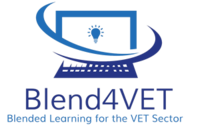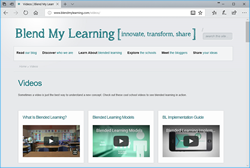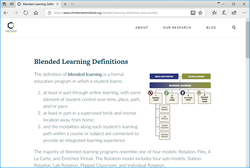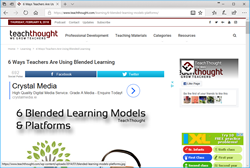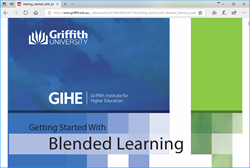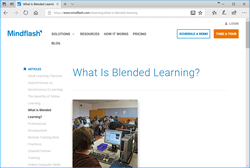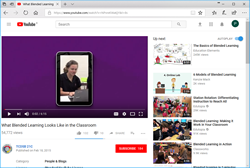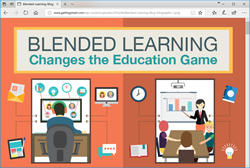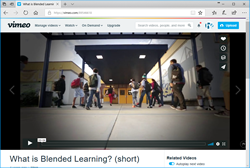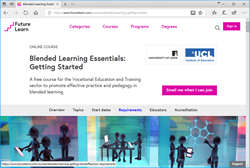Blended learning is a method of learning that combines face-to-face and online instruction.
Source: itslearning Global
Blended learning is a term increasingly used to describe the way e-learning is being combined with traditional classroom methods and independent study to create a new, hybrid teaching methodology. A course created in a blended learning model typically delivers the learning material outside the classroom through pre-made videos, presentations etc. The face to face time is then allocated for activities that benefit the most from direct interaction like questions and discussion.
This is what a typical week of a blended learning course could look like:
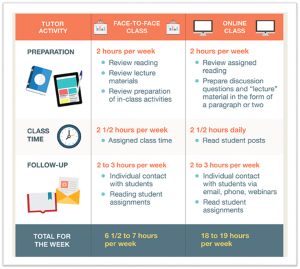
Source: Building Online Learning communities: Effective Strategies for the virtual classroom Ren M. Pallodd, Keith Pratt
Blended Learning at Bradford
This video demonstrates clearly the steps involved in blended learning.
- Students are asked to watch a video demonstration in their own time (outside of the classroom), as many times as they would like.
- In the classroom there is a quick recap, and questions are asked.
- Most of the rest of the class is spent practicing what they have learned.
This way the class time is used far more effectively. Time is not spent delivering materials, but rather used to refine and improve the understanding of knowledge the student already has. This type of blended learning is known as the ‘flipped Classroom’.
Source: Blended Learning Essentials: Getting Started – University of Leed
Benefits for the Learner
- Learners have greater time flexibility, freedom, and convenience by working part of the time online from anywhere.
- Learners have access to unlimited up-to-date resources available via the web.
- Learners become self-driven and responsible, tracking their individual achievements.
- The flexibility of blended learning and the ability to access Internet resources, allows learners to learn at their own pace, meaning a Tutor can help speed up the learning process or give more advanced resources if necessary.
Benefits for the Tutor
- Better information and feedback on learner’s work.
- More engaged learners.
- Allows tutors to better utilize face-to face time with learners.
- Can be a method to infuse new engagement opportunities into established courses.
- Gives the ability to check how individual learners or whole classes are performing.
- Blended learning gives tutors the ability to engage learners in a deeper and more meaningful context in the classroom.
If you would like to learn more about blended learning and how it can be implemented in a VET environment, consider enrolling in the ‘Blend4Vet’ online course : What Constitutes Good Blended Learning in VET? (Sample Module below)
Please use the Contacts page or email info@blend4vet.eu to request access
Blended Learning in VET
Module 1 aims to:
- To provide learners with an overview of blended learning in VET.
- Deconstruct the jargon of blended learning
- To showcase how blended learning can be deployed in VET.
Module Presentation
(Please note: Presentation opens in a new tab/window)
Learning Resources

